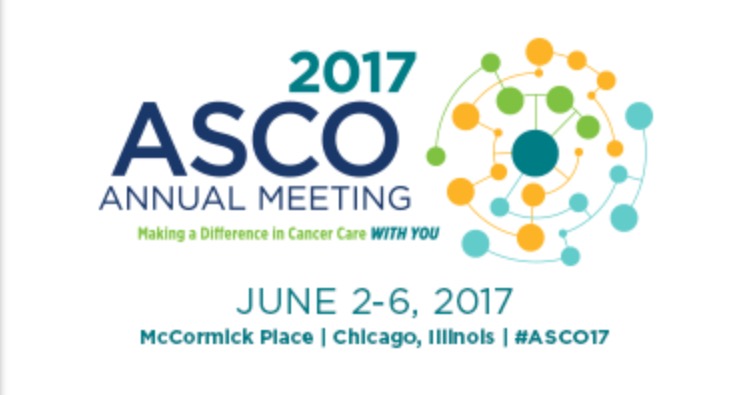Low grade glioma patients with IDH mutation and 1p19q codeletion: To treat or not to treat?
Sub-category:
Central Nervous System Tumors
Category:
Central Nervous System Tumors
Meeting:
2017 ASCO Annual Meeting
Abstract No:
2017
Poster Board Number:
Poster Discussion Session (Board #259)
Citation:
J Clin Oncol 35, 2017 (suppl; abstr 2017)
Author(s): Enrico Franceschi, Dario De Biase, Alexandro Paccapelo, Antonella Mura, Alicia Tosoni, Stefania Bartolini, Giovanni Tallini, Annalisa Pession, Daniela Danieli, Sabrina Rossi, Daniela Bartolini, Marina Paola Gardiman, Lorenzo Volpin, Vania Ramponi, Antonio Fioravanti, Maria Pia Foschini, Enrico Di Oto, Santino Minichillo, Stefano Pizzolitto, Alba Ariela Brandes; Department of Medical Oncology, Bellaria Hospital, Azienda USL – IRCCS Institute of Neurological Sciences, Bologna, Italy; Department of Pharmacy and Biotechnology (Dipartimento di Farmacia e Biotecnologie) – Molecular Diagnostic Unit, Azienda USL di Bologna, University of Bologna, Bologna, Italy; Bellaria Maggiore Hospital, Bologna, Italy; Department of Medical Oncology, Azienda USL– IRCCS Institute of Neurological Science, Bologna, Italy; Department of Medicine (Dipartimento di Medicina Specialistica, Diagnostica e Sperimentale) – Molecular Diagnostic Unit, Azienda USL di Bologna, University of Bologna, School of Medicine, Bologna, Italy; Pathology Department, Vicenza Hospital, Vicenza, Italy; Pathology Department Azienda ULSS 9 – Treviso Ospedale Generale di Treviso, Treviso, Italy; Pathology Department Bufalini Hospital, Cesena, Cesena, Italy; Pathology Department, Neurological Sciences, Azienda Ospedale–University of Padua, Padua, Italy; Department of Neuroscience and Neurosurgery, San Bortolo Hospital, Vicenza, Italy; Neurochirurgic Department Bellaria Hospital, Bologna, Italy; Department of Neurosurgery Azienda USL– IRCCS Institute of Neurological Science, Bologna, Italy; Unit of Anatomic Pathology at Bellaria Hospital, Department of Biomedical and Neuromotor Sciences, University of Bologna, Bologna, Italy; Pathology Department, Bellaria Hospital, Bologna, Italy; Azienda Ospedaliero-Universitaria, Udine, Italy; Medical Oncology Department, Bellaria Hospital, AUSL-IRCCS Institute of Neurological Sciences, Bologna, Italy
Abstract Disclosures
Abstract:
Background: Molecular characterization of low grade gliomas (LGG) is essential for diagnosis and treatment of these diseases. LGG patients (pts) with IDH mutation and 1p19q codeletion (codel) are characterized by a median OS (mOS) longer than 10 years. Thus, the role of treatments and side effects should be carefully evaluated. Methods: We evaluated LGG pts from our data warehouse (n=679 pts) who received surgery and had sufficient tissue to assess biomarkers characterization. Pts with gliomatosis were excluded. IDH1/2 assessment was performed on formalin-fixed paraffin-embedded samples by qPCR. In wild type cases we performed NGS. 1p/19 codel analysis was performed by FISH. Results: 93 consecutive LGG with IDH mutation and codel were included. The median follow up (FU) was 96.1 months. Mean age was 40 yrs (range: 25-66); 8 pts (8.6%) underwent biopsy, 61 pts (65.6%) partial resection, 24 pts (25.8%) complete resection. 84 pts (90.3%) were considered high risk using RTOG criteria (>40 years and/or incomplete resection). Fifty pts (53.7%) received only FU, 17 pts (18.3%) received chemotherapy (CT), 18 pts (19.4%) received radiotherapy (RT), 8 pts (8.6%) received RT + CT. Median PFS (mPFS) was 59.6 months (95%CI: 41.8-77.4) and was significantly longer in pts who received postsurgical treatments (79.5 months, 95%CI: 66.4-92.7) than pts who received FU (46.3 months, 95%CI: 36.0-56.5; P=0.001). mPFS was 50.8 months (95%CI: 17.4-84.3), 103.6 months (95%CI: 11.7-195.6) and 120.2 months (95%CI: 40.5-199.8) in pts treated with CT alone, RT alone and RT + CT, respectively. Multivariate analysis showed that receiving a post-surgical treatment (P<0.001), and the extent of resection (P=0.043) were significantly correlated with PFS. Conclusions: Our study evaluated the role of treatments in LGG pts assessed with NGS and FISH. Post-surgical treatments are crucial to extend PFS in pts with IDH mutation and codel. The choice of post-surgical treatments seems to have a role, being CT alone less effective than RT and RT+CT. Longer FU is needed to provide information about OS.

